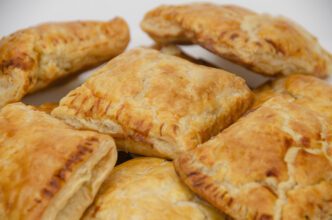Sleep tourism is rapidly emerging as a prominent trend in the travel industry, catering to the increasing demand for quality rest and relaxation. This unique form of tourism prioritizes enhancing sleep quality through specialized programs offered by resorts and wellness retreats worldwide. These programs go beyond providing luxurious accommodations, incorporating advanced technology and holistic practices to improve sleep health.
The rising interest in sleep tourism is part of a broader movement towards comprehensive health and wellness. As individuals become more aware of the importance of sleep alongside diet and physical fitness, travel experiences focusing on rest have gained traction. A report by HTF Market Intelligence indicate that the sleep tourism sector is valued at over $690 billion and is expected to grow by an additional $400 billion by 2028.
The Art of the Napcation
What is Sleep Tourism?
Why Is It Growing?
Market on the Rise
Global Sleep Tourism Market (Billions USD)
Key Growth Drivers (2025 Market Share)
Different establishments offer varied approaches to sleep tourism. Medical spas, such as the SHA Wellness in Spain, employ scientific methods to address sleep-related issues. Guests can receive personalized treatment plans that include lifestyle changes, dietary recommendations, and therapies to treat conditions like sleep apnea.
A clear example of the progress in sleep tourism is the COMO Metropolitan Singapore. Here, guests can utilize a Hyperbaric ‘Airpod’ at the COMO Shambhala wellness center, which is said to deepen the sleep cycle and reduce stress by delivering a combination of oxygen and molecular hydrogen. The hotel’s ‘Sleep Dreams’ initiative also incorporates ‘SleepHub’ technology, which uses neuroscience and psychoacoustic sound technology to help guests fall asleep and maintain sleep.
Nestled on the tropical island of Koh Samui, Kamalaya Wellness Sanctuary offers a comprehensive program called “Sleep Enhancement.” This program is designed to address the root causes of insomnia and sleep disorders through medical consultations, therapies based on traditional Chinese medicine, therapeutic massage, and conscious breathing practices. The program, typically lasting 7 to 21 nights, aims to calm the mind and relax the body for improved sleep.
In the verdant countryside of the Fiuggi region, Palazzo Fiuggi recently launched a “Sleep Recovery” program. This program aims to identify and treat sleep disorders using advanced, non-invasive diagnostics. Guests receive personalized consultations with a neurologist specializing in sleep medicine, followed by tailored treatments. The stay also includes holistic therapies such as meditation, thalassotherapy sessions, aromatic massages, and the use of innovative technologies like the Niraxx sleep strip and binaural sound therapy, complemented by the renowned purifying Fiuggi mineral water.
Other destinations offer holistic experiences, integrating ancient wisdom and relaxation techniques. In the Maldives, Soneva provide comprehensive sleep programs that include mindfulness, yoga, and personalized rituals aimed at rebalancing the body’s systems. Similarly, resorts in Italy and Sri Lanka incorporate traditional Chinese medicine and Ayurvedic treatments to enhance sleep quality.
The trend is also being driven by technological innovations. Some hotels have developed programs utilizing AI and VR to facilitate lucid dreaming and monitor sleep quality. Advanced beds capable of analyzing sleep patterns are on the horizon, promising to provide guests with data to improve their rest during their stay.
As sleep tourism continues to evolve, it embodies the intersection of health, technology, and travel, offering a unique solution for those seeking a restful escape from their hectic lives.
Report source: Sleep Tourism Market Size & Growth Outlook 2025-2031 by HTF Market Intelligence







